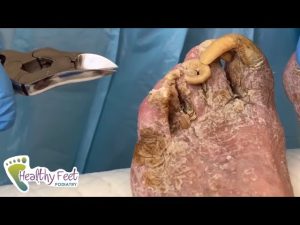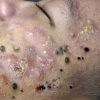Treating a very thick fungal nail on the big toe requires patience and consistency. Here are the most effective steps:
1. Soften and Thin the Nail
- Trim and file: Use a nail clipper to cut the nail as short as possible. Then, use a nail file or an electric nail grinder to thin the surface of the nail. This allows antifungal treatments to penetrate better.
- Soak the nail: Soaking your foot in warm water with Epsom salt or vinegar (1 part vinegar to 2 parts water) for 15-20 minutes can help soften the nail.
2. Apply Antifungal Treatment
- Topical antifungal medications: Use over-the-counter antifungal solutions like terbinafine (Lamisil), ciclopirox (Penlac), or efinaconazole (Jublia).
- Natural remedies (for mild cases):
- Tea tree oil: Apply diluted tea tree oil (with a carrier oil) directly to the nail.
- Vicks VapoRub: Some people find it helpful for mild cases.
- Listerine soak: Soaking your feet in Listerine (which has antifungal properties) for 15-20 minutes daily may help.
3. Oral Medications (For Severe Cases)
If the nail is very thick and resistant, consult a doctor. Prescription oral antifungal medications like terbinafine (Lamisil) or itraconazole (Sporanox) are more effective but require several months of use.
4. Professional Treatment
- Laser therapy: Some podiatrists offer laser treatment to kill the fungus.
- Surgical removal: In extreme cases, the nail may need to be removed to allow a new, healthy nail to grow.

5. Prevent Reinfection
- Keep feet dry and clean.
- Wear breathable socks and shoes.
- Disinfect nail clippers and avoid sharing them.
- Use antifungal sprays or powders in your shoes.
If the infection does not improve within a few months, see a podiatrist for further evaluation.

Regular foot soaks help make thick nails easier to manage. Try these options:


